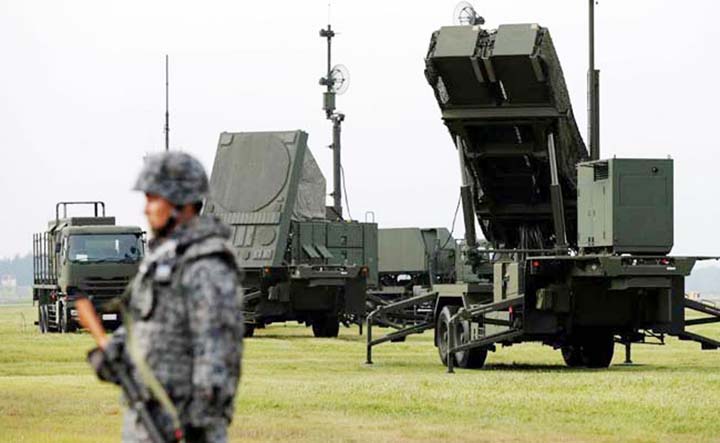
Reuters, Tokyo :
North Korea’s growing missile arsenal might be the most obvious and immediate military threat facing Japan, but defence planners in Tokyo are focused on a much larger and more challenging foe as they prepare for the years ahead.
China has stepped up military spending and already dominates the South China Sea, through which Japan’s trade with major markets including Europe and the Middle East flows.
Now, Japanese military experts are worried Beijing may be on the brink of opening access to the Pacific through a Japanese island chain that has marked the limit of China’s military influence for decades.
Tokyo sees unfettered passage for Chinese warships and warplanes through the Okinawan island chain as a threat to vital sea lanes. For China that access is part and parcel of becoming a global superpower.
“Now, we are evenly matched but the reality Japan faces is that it is becoming the underdog,” said Nozomu Yoshitomi, a professor at Nihon University in Tokyo who advised Japan’s government as a Self Defence Forces military analyst.
In addition to having Asia’s second-largest military, Japan is also defended by U.S. forces that have used the country as their main Asia base since the end of World War Two. Under a security treaty, Washington is obliged to aid Tokyo if its territory is attacked.
China has “essentially established de facto control over the South China Sea and the East China Sea is next,” said a retired senior U.S. military commander on condition he wasn’t identified. “The United States, for its part, has been in relative retreat in the Western Pacific for a decade.”
Beijing is ramping up military spending to build a world-class fighting force by 2050 with advanced kit, including stealth jets and, according to state-run media, a nuclear-powered aircraft carrier.
In 2018, Beijing plans to spend 1.11 trillion yuan ($175 billion) on its armed forces, more than three times as much as Japan.
That would also be around a third of what the United States pays for the world’s most powerful military, including 30,000 marines in Okinawa and a navy carrier attack group based near Tokyo.
“The pace of Chinese activity in waters around Japanese territory has expanded and accelerated,” Japan’s Minister of Defence Itsunori Onodera said this month. “China is building the capacity to operate in distant seas and that can be see with China’s acquisition of its first carrier and its construction of a second flat top.”
China says its military is for defensive purposes and its intentions in the region are peaceful. China’s Defence Ministry did not respond to a request for comment.

